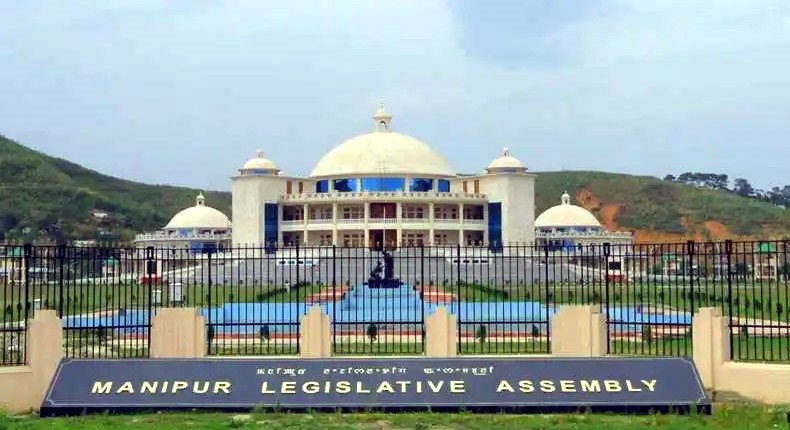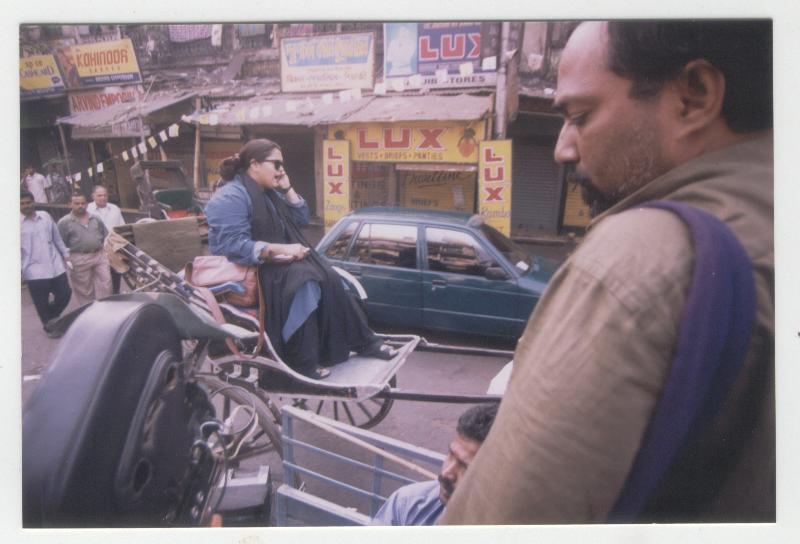Fifty-three years ago, in 1972, Manipur witnessed the advent of its first feature film and today it has come a long way. Though many films were produced, only a handful have made it to national and international platforms with prestigious recognition. The reason: most films were based on inadequately researched narratives without much focus on all aspects and grammar of filmmaking, while mainly focusing on the domestic market. Nevertheless, the efforts were laudable as people were experimenting with the limited means they could muster. Today, many cinema halls have shut their shops, and many professionals have changed their professions. This stems from many factors, and no single factor is responsible for all.
However, we have reached 53 years of Manipuri cinema in April 2025, and it is high time to discuss the path ahead for Manipuri cinema. In the global context, we have seen a rise in OTT (Over-The-Top) streaming services, and the film industry has been transformed unimaginably. Many homes no longer use their TVs and instead rely on smartphones and tablets to watch films as well as other content. OTT platforms have transformed the way films are produced, distributed, and consumed. This leads to both opportunities and challenges for the industry across the world.
With the advancement of technology, these changing forms of film distribution, and the current state of Manipuri cinema, the Imphal Review of Arts and Politics (IRAP) had a conversation with a handful of the state’s filmmakers to understand their perspectives on the current trends in Manipuri cinema and where they see Manipuri cinema in the next five years.
Maipaksana Haorongbam, a two-time National Award-winning filmmaker, gave a nuanced and realistic view of the state of Manipuri cinema today. When asked where he believes the industry stands today, especially amid debates over whether it is flourishing or fading, he responded: “Opinions differ, some say Manipuri cinema is progressing, others say it’s declining, or even dead. In my view, it is somewhere in between—it hasn’t fully developed, but it hasn’t degraded either. Just because one film becomes successful doesn’t mean the industry is thriving. We can only say Manipuri cinema is truly developed when multiple films succeed and are embraced by the public. At present, Manipuri cinema is neither at its peak nor at its lowest point.”
Maipaksana’s words reflect the complex realities facing the industry. What does it really mean for a regional cinema to be “developed”? Is success measured by awards, audience reach, or consistency in quality storytelling? Turning to the technical limitations that hold back broader progress, Maipaksana elaborated: “In terms of technical capability, filmmaking is a large-scale industry that requires substantial budgets. As of now, Manipur lacks access to the high-end, expensive cameras used in bigger film industries. Only a few individuals have been able to use such equipment here. To truly enhance the quality of Manipuri cinema, we all, producers, directors, and artists, must improve together. Only then can we say Manipuri cinema has flourished. For now, it stands in the middle, between good and bad.”
This assessment highlights a pressing challenge: without access to the tools and infrastructure that larger industries take for granted, how can Manipuri cinema compete or even keep pace? And beyond equipment, what role does collective growth and collaboration play in driving a regional film movement forward? Maipaksana also touched on the evolution of storytelling in Manipuri films, offering a glimpse into how content and audience expectations are shifting: “In the past, there was a trend of melodramatic films where the hero was poor, the heroine was rich and beautiful, and they ended up marrying. That formula dominated for a while. But now, storytelling is evolving. Today’s filmmakers are educated and well-trained. As a result, the old melodramatic trend may fade, giving way to more realistic and experimental storytelling.”
With younger, better-trained filmmakers stepping up, is Manipuri cinema on the brink of a creative shift? Maipaksana’s reflection suggests that a new cinematic language may be emerging, one grounded less in formula and more in experimentation and authenticity.
National Award-winning filmmaker and author Bobby Wahengbam reflects on the evolving landscape of Manipuri cinema with both urgency and optimism. As states like Arunachal Pradesh and Meghalaya pick up pace in filmmaking, he believes Manipur has the potential to move just as swiftly, if not faster, but must navigate challenges unique to India’s media environment.
“Our films, like Korean dramas, tend to be melodramatic, and audiences enjoy these love stories and web series,” he observes. “But we lack films that provoke critical thinking.” Bobby emphasizes the need to broaden the scope of storytelling to include narratives that challenge and engage the intellect, not just the emotions.
He highlights a crucial shift in audience strategy: “We must begin showing our films outside Manipur.” Making films solely for local audiences may polish craft, but limits potential. Reaching beyond the state is essential for growth, both creatively and commercially.
Financial viability remains a central concern. “Since money is the common denominator of every value in life, without it, we won’t thrive,” he states. If Manipuri films can tap into national or international markets, even modest box office returns could transform into significant revenue. With the rise of smaller multiplexes, seating 100 to 200 people, there’s now space for regional films. “We need to think carefully about what kinds of stories we tell and how we tell them, so people outside Manipur want to watch.”
For Bobby, genres like horror or native folklore, especially those rooted in Manipur’s rich cultural and spiritual identity, offer fertile ground. “What we may take for granted, outside audiences may find magical,” he says. Stories like Khamba Thoibi, if told with universal aesthetics, could resonate far beyond the state. “We need to bridge the thinking gap. Audiences will connect with our tales if we present them through structures they recognize, for example, if we try to relate Romeo and Juliet to our Moirang Parva.”
He urges filmmakers to step out of their comfort zones, creating either commercially viable works or independent art films, both of which have distinct platforms and markets. “This is a fertile period. If we don’t act now, we’ll fall behind. Other states are already participating actively.”
The road ahead demands experimentation—not just in storytelling, but in marketing strategy as well. “We need patronage, especially from the government, and the courage to innovate. Only then will Manipuri cinema move from survival to success.” For Bobby, the future is clear: “It may not happen overnight, but in the next five years, Manipuri films will thrive, if we make the right choices now.”
James Khangembam, a young and dynamic filmmaker is best known for his work in documentary filmmaking. His film Meiram made waves. As someone deeply engaged in the independent film space, his perspective offers valuable insight into where the state’s film industry stands and where it could be headed.
“If broadly seen, Manipuri film production has two sides,” he explains. “One is more focused on mainstream cinema with a commercial goal, and the other consists of independent filmmakers aiming for film festivals, revenue, and recognition.”
James sees immense potential in the latter. “If solid research is done and the film has universal appeal, there is a high chance of pushing boundaries and reaching greater heights,” he says, citing filmmakers from Manipur and Assam who are already making a mark at major film festivals due to the depth and quality of their research-driven stories.
However, he acknowledges that commercial filmmakers, too, often engage in thorough research, though their objectives differ. “We have a dedicated domestic audience, and previously, films reached them through TV channels. Now, the shift to OTT platforms is redefining that distribution.”
James emphasizes that Manipur already has a functioning film ecosystem—directors, editors, cinematographers, and technicians are in place. What’s needed now is structured support and long-term planning. “If we focus on a five-year roadmap for the industry, we must ensure that the Manipur State Film and Television Institute (MSFTI) is operating effectively and evolves into a proper film school,” he notes. He also commends the Manipur State Film Development Society (MSFDS) for organizing regular festivals, workshops, pitching labs, and for bringing resources into the state. “They are doing their best.”
Government involvement, he argues, is crucial. “If the government can fully finance both feature and non-feature films, the impact would be significant,” he says, welcoming the recent increase in film award prizes as a positive step.
For the Meiram director, the film industry is more than just a cultural endeavor—it’s an economic opportunity. “Manipur is rich in storytelling traditions—our songs, literature, theatre, and even instruments like the Pena all narrate stories. Film, being a visual and auditory medium, is just a continuation of this heritage on a broader canvas.”
He urges filmmakers to tap into this richness: “If we can craft our stories with the right audiovisual grammar and universal appeal, we can reach global platforms—and with that, both glory and financial sustainability.” He sees the potential for Manipuri films to land on Netflix, Amazon Prime, or other premier OTT services as a genuine possibility.
“If people continue to engage with institutions like MSFTI and MSFDS, and actively participate in film festivals and programs, the momentum will only grow,” he says.
James Khangembam’s vision is clear: with structured support, universal storytelling, and a commitment to quality, Manipuri cinema can move from the margins to the mainstream, both at home and on the world stage.
Since Manipur is a state where notoriety has too often been the sole export to both national and international attention, a nuanced understanding and revitalisation of Manipuri cinema are genuinely the need of the hour, not merely to transcend parochial confines, but to reassert the transformative enchantment of the cinematic arts.












